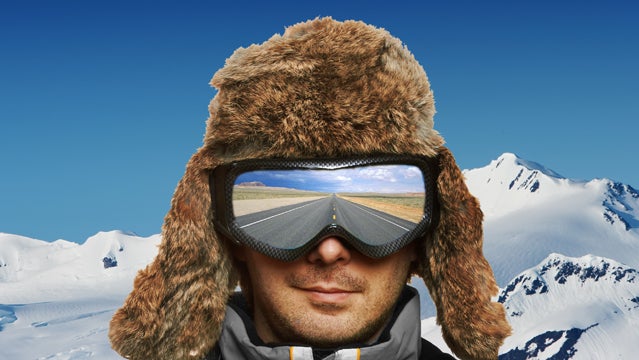Twenty-five years ago, skiing was a different beast. Skis were straight and narrow and long … really long. Helmets, Gore-Tex jackets, Alpine Touring gear and thermomoldable liners weren’t even a glimmer in the skier’s eye. Ski movies involved a lot of hang gliding, train-jumping, and moguls. Resorts didn’t have gladed runs, side country wasn’t a concept, and the only helmet cam was a full sized VHS video recorder duct taped to a hockey helmet. Global warming didn’t exist as far as any of us knew. The Internet didn’t exist. And freestyle skiing meant you did snow ballet.
In 25 years, the world has changed enormously, and with it skiing. What will the sport look like 25 years from now?
As ski season 2013 wraps up, we turn to 10 of the ski industry’s visionaries, luminaries, and legends, from athletes to gear designers to filmmakers to snow activists. We asked them to gaze into their crystal balls and tell us what they see for skiing a quarter century from now. Here are their bold—and ooccasionally wacky—predictions for 2038.
The Future of Skiing: Auden Schendler
The Vice President of Sustainability for Aspen Skiing Company
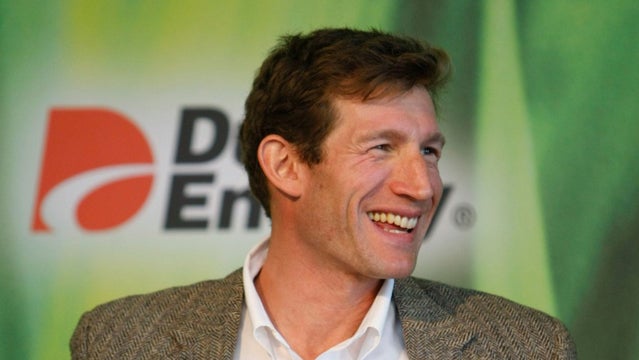
I think as climate change becomes more and more evident, and as we respond to it with policy decisions like carbon taxation that makes long distance travel more expensive, we’re all going to be forced to slow down.
We’re also going to slow ourselves down as we recognize that living an ethical life means leading a lower carbon life to the extent that we can. We’re going to have to give up some of the craziness of the last half century: the growth, the doing way better than our parents (by faulty metrics), the me, the now, the constant movement, impatience, time poverty.
And what by necessity we’ll have to do is circle back to the things we care about: staycations where we build treehouses with our kids; walks around the neighborhood; sewing torn clothing; gardening. All this instead of jetting off to the next race, or lavish vacation, or training program so our kids become #1. We’re going to have to come back into ourselves, to do what Kurt Vonnegut said we are on earth to do: to fart around, and I would add, fart around with each other.
People fear this, but why? In the ski business, to me this means ending some trends that are killing us. Instead of the crazed need to be open by Thanksgiving, maybe climate change will force us to the sensible realization that it’s good business to open on December 15th and rely more on natural snow.
Maybe smaller, flexible, regional resorts that pulse open or closed with the storm cycles will take over in places where it’s clearly too much trouble to try to be open all the time.
Summer business—which resorts have never been able to crack—will flourish as people come to cooler, higher resorts to escape the heat. They might realize that they don’t need some big, crazy, mechanized thing or event or challenge to help them recreate; all they need is a pair of sneakers and a small pack.
And the result, I think, is that we will be happier. We’ll be doing what we were supposed to be doing in ski resorts anyway: resting, to paraphrase Wendell Berry, in the grace of the world, and being free.
Auden Schendler is the Vice President of Sustainability for Aspen Skiing Company, and author of .
The Future of Skiing: Jeremy Jones
The big mountain skier and founder of Protect Our Winters
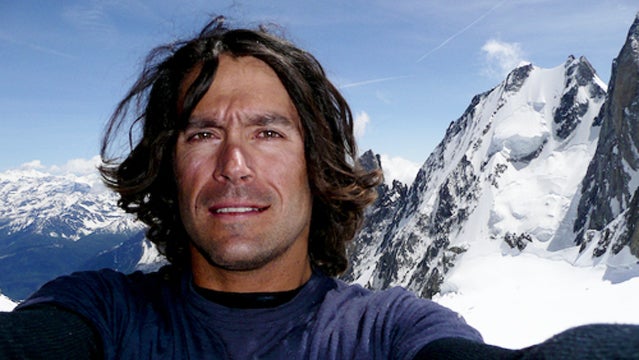
In 25 years, we’ll be in the hands of the next generation—the generation of kids that has been talking to at school. That gives me some hope that we’ll see some definitive change as a society. Our school programs lay it out: this is the world you’re growing up in, here are facts, here are solutions.�� We’re working to raise awareness in kids, working to get the next generation to embrace the outdoors and the mountains. It’s a simple concept, but a super important one.
I dream that in 25 years we’ll be fully embracing green tech, clean energy, energy independence and everything along those lines. But if our ski areas all go to solar and nothing else does, it doesn’t mean a damn thing. In a perfect world, ski areas and skiing and snowboarding come together and demand we make changes. Collectively, we could be a powerful force and have a big voice on Capitol Hill, with the ultimate goal being clean energy throughout every facet of life.
On the equipment front, we’ve come a long way. uses FSC wood cores, recycled sidewalls and bases, wood topsheets. The next improvements are going to be trickier; the big stumbling blocks are the resins used in laying up boards, the glues. In 25 years, there will be a spotlight on manufacturers environmental practices. In the future, companies won’t be able to get away with cost effective prices with no concern for the environment. Skiers and riders are going to demand environmentally produced product, and all products will fit this description. Sustainably harvested wood cores will be the norm, not a category.
In 25 years, the snowboard boot/binding interface will change—we’ll have other options. I would have lost a bet 20 years ago that that interface would be different. I am willing to re-up on that bet.
In 25 years, the backcountry segment will have grown significantly. It’s already happening. Sugarloaf, Maine, did a sidecountry expansion, . It doubles the resort’s terrain without a single new lift. It’s progressive thinking. Fifteen years ago, I’d ask, “Why didn’t that lift go to top?” Now I like it better if there is a half-hour hike. Closed gates need to go away. Resorts need to embrace the rich 40-year old who embraces powder and wants to go into the backcountry.
Everyone will have an airbag in 25 years and we won’t be bombing for avy control. We’ll have automated snow control, like on Teton Pass, but everywhere.
The next generation will be full tech and social media addicts, but eventually this trend will ebb and flow, and social media will be lame. We’re coming into time of snow decline, but it’ll be offset by punk rock kids who think going outside is cool.
A huge thing I dream of is that mountains will embrace snowparks. Right now parks are one-dimensional. I’d like to have skatebowl-inspired parks, —surfy-snake enhanced groomers. You need to be really advanced to go high, but anyone can ride them. There will be quarter pipes cut into the edge of trail. Instead of smoothing out the terrain, it’ll be an enhanced cat track with playful elements.
Jeremy Jones is the owner of , Big Mountain Rider and founder of .��
The Future of Skiing: Peter Metcalf
The President and CEO of Black Diamond
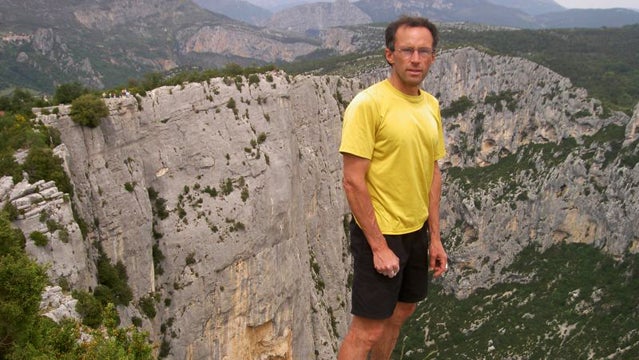
If we are honest, we see certain global trends that inevitably will impact skiing 25 years from now. Though that seems far into the future, as I look back over the past 25 years, it seems like little more than the blink of an eye. Those “inevitable trends” are global warming, electronics, gymnastics, and off-piste/back-country skiing. As important is the interplay that all four of those trends will have on one another.
Global warming will fuel the growth of freeride and off-piste skiing as the best and most consistent snow will be away from and above the majority of the primary resorts. This quest for great snow, big lines, and the adventure that is increasingly lost in today’s world will drive the popularity of off-piste and big mountain skiing. That increased popularity will act as a catalyst for an increased reliance on gadgets in the form of avalanche safety, personal locators, and other forms of apparel and equipment that will offer you the requisite level of safety, comfort, and flexibility required by the much more demanding natural world beyond the civilized, lower altitude world of the resorts. That combined with an ever-increasing level of gymnastic training means that skiing will continue to up the ante and redefine the definition of possible.��
Skiing’s future lies not in the resorts but in the landscapes that come into view from the top of a gondola or teleferique. It is that siren song that will drive the creative and passionate souls of the industry going forward.
Peter Metcalf is the President and CEO of .
The Future of Skiing: Mike Douglas
The “Godfather” of freeskiing
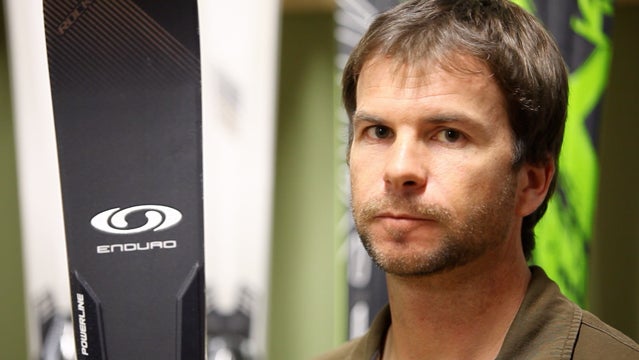
Climate change. That’s going to change the face of this sport more than anything else. It’s frightening—the pace that we’re starting to see temperature rise. The traditional winter experience we all grew up with will be inscreasingly rare.
There will still be snowy places, but more often than not, skiing will be an artificial experience. Like what they’re developing in China, Dubai and the UK. Indoor areas will sadly become more normal. I wanna be optimistic about a snowy future, but I follow on Twitter.
Beyond that, we’re starting to lose a lot of the mom and pop ski areas. Economically they don’t work that well anymore. Even big resorts like Whistler don’t like to see that happen. It’s where people learn to ski. Losing those types or relatively inexpensive experiences is not good. Passion and community is what drives people to skiing. Small resorts are where those things thrive.
Right now we’re seeing a move toward the backcountry. People want to get out and explore like never before. And I think part of that enjoyment is earning it.
In 25 years, the super rich are going to be skiing in the most remote and absurd places on earth. The average skier I’m less sure about. I think creativity is going to be the front edge of ski media rather than extreme action sports. We’re getting close to the limit of what people can physically do. Injuries in top athletes are more frequent and severe. Realistically a human body can only take so many flips off the ground.
The shift we’re starting to see is creativity. I feel like the front end of skiing is being increasingly driven by snowmakers as much as athletes and people willing to put a spin on the sport. It’s not going to be ski equipment but medical technology that changes how we ski, like stem cells that can finally grow you a new knees, grow you a new disc in your back. If that happens, the crazy bar will get raised again.
A while ago I got bored of Ski Porn. Telling stories with ski movies rather than just showing action is much more motivating for me. The beauty of filmmaking is that incredible work still stands no matter how long ago it was made. Good movie making is good movie making.
Twenty-five years from now, I have a feeling that we will have explored the earth top to bottom. That leaves our own minds as the last frontier.
Mike Douglas is the “Godfather” of freeskiing, and the Director/Producer/Editor of .
The Future of Skiing: Jamie Schectman
The co-founder of Mountain Rider’s Alliance
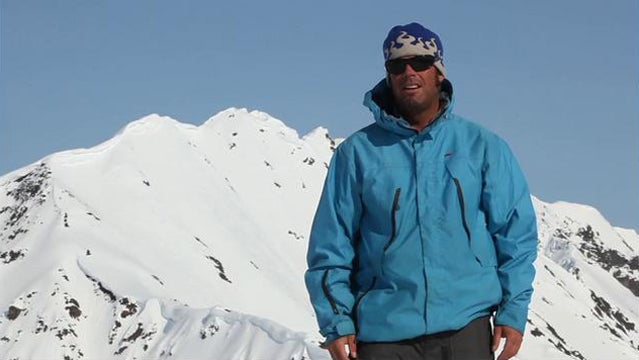
In 25 years, I envision ski areas that double as energy centers. Virtually all ski areas have the ability to make their own energy from a combination of solar, wind, micro-hydro, geothermal and/or biomass. As energy costs continue to increase, this will become commonplace and eliminate the number two cost of running a ski resort.
The current paradigm of corporations and their focus on box amenities, real estate, and theme park attractions will be replaced with ski areas that get back to focusing on what is important, providing uphill transportation and on-snow recreation.
I envision many ski areas that are owned by their customers and the surrounding community. Much like the 50-mile diet and local co-ops, the concept of people pooling their assets together for a common good will be prevalent.��What will precipitate that change? Many mom and pop ski areas being squeezed out. In the ‘80s, there were 800 ski areas in North America. As communities are facing closing ski areas, like in California, in Vermont, some mountains went local. Communities want to maintain ski areas. The current ownership structure is not working.
I’m not a doomsdayer, but the bigger a ski area is, the harder you fall. Vail is a great example. It owns ten ski resorts and controls 25% of the market. If something happened to Vail, it would have a devastating effect on the industry as a whole. As electricity costs go up, big ski areas are not going to be able to keep building and continue to make their nut. A big resort needs thousands of skier visits each day to break even. A huge footprint equals more susceptible.
Now we have the that allows any recreational activity to occur on US Forest Service public lands. Other revenue streams, other activities will offset the lack of snow. It used to be skiing was centerpiece and the base lodge was the amenity. Now it’s reversed. Food, roller coasters, waterparks and the rest of the village are the centerpiece and skiing is the amenity.
The world is shifting to a greener place. By the time today’s kids are adults—being sustainable will be commonplace. We’re at a crossroads, but it’s starting to matgreeter to people. Jiminy Peak in Massachusetts , and the next year they had a 15% increase in skier visits. Ski areas making a sustainability commitment are getting a following. Skiing, community, respect for environment is what’s important. We’ve forgotten about that. But we’re getting back to that place.
Jamie Schectman, Co-Founder of .
The Future of Skiing: Roger McCarthy
The former President of Vail Resorts
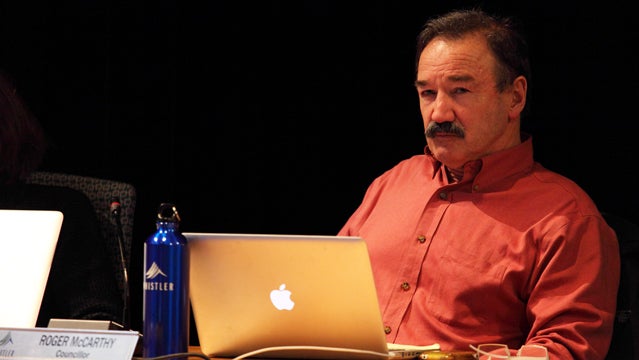
Racing drove ski design. We’ve had that get turned upside down. If you want racing skis now, you have to special order them.
I wonder if in 25 years, terrain parks will hold on to the level of traffic they see today. My sense is that they will decline in use and popularity. We’ll still see them in comps, but in the same way that we don’t see moguls comps anymore or aerial comps or bump comps, it’ll peter out. The focus will be freeskiing and new frontiers—an explosion of backcountry equipment.
It used to be that you knew the people wearing AT gear. It was six guys on patrol and a bunch of hardcore locals. Now AT gear is becoming more and more prevalent. The sidecountry has exploded. What’s interesting is, really, less is more.
Twenty years ago the ultimate conquest for a ski area was to pound a lift into a peak. In 25 years, backcountry access will be more important.
In Europe, no one goes into the backcountry without a guide. It’s the opposite in North America. It’s the brave and educated out there. In 25 years, we’ll see guided experiences surge in popularity. There will be more backcountry huts in the mountains of the west.
The quality of ski equipment, clothing, and boots will improve. Twenty-five years ago, skiing at the resort in AT bindings would have been taking your life in your hands. Now you can get AT bindings with DIN 15! All the guys in the movies are skiing AT gear and doing amazing things. Where were these skis and boots of today when I was skiing 120 days per year on Whistler patrol carrying 25-30 pounds of explosives on my back on 210 GS skis? We’ll see weight reductions with anything on our feet and anything we have to carry. Who knows where camber will go.
I think the single biggest challenge to the health of the ski industry is cost. Vail’s day ticket is $119. And the equipment is outrageous. Skis boots poles goggles—the cost to get into the sport is a huge. The number of people a chairlift can move up the hill used to be 1200 per hour. Now we can move 3000 people per hour. But it’s $7-$8 million for a high-speed quad. In the future, lifts will become more cost-effective, which will make skiing more accessible for more people. And it will be easier to get to the lift from the parking lot. No more awkward walking in ski boots.
The ability to try things and do things in the park is a reflection of the level of safety of equipment. We haven’t seen that in backcountry. It’s just starting. And the frontier of what’s available is extraordinary. Will there be tech to tell us what’s safe? What’s not? In today’s world, experience is teacher. In the future, technology could surpass experience.
Roger McCarthy is Councilman in Whistler, British Columbia, and the former President of Vail Resorts.
The Future of Skiing: Mike Hattrup
The Global Director for K2’s �����ԹϺ��� category
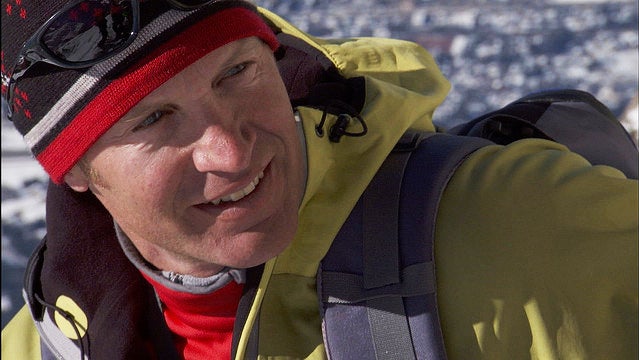
When I think about the future, I think about Shane McConkey. One of the projections he would have given you—which I chuckled at, like I chuckled at camber and reverse side cut when he suggested those—is shocks on skis. Shane McConkie wanted mountain bike-style shocks on skis so that he could land big airs. “I want to jump off a cliff and land it—boom,” said Shane. I thought rocker was niche when Shane came up with it—now you can’t buy a K2 without rocker.
In 25 years, I don’t think skis will look much different. I said that 25 years ago and I was wrong. If I keep saying it, eventually I’ll be right—right?
Materials will be more high-tech, lighter. Climbing skins are going to be gone. You’re going to flick an electrostatic switch that makes your skins stick to snow like your tongue to a chair lift. Air bags are going to be the size of beacons. Beacons will be gone. Airbags will have beacon capability, and airbag tech will be heading towards lifting you off the ground so an avalanche can float under you.
Access lifts are going to be everywhere. They may or may not be part of a ski area. They’ll go to where the snow is.
Climate change will be happening, but like JP Auclair shows in , you don’t need that much snow to ski, just enough to land on. We may see urban ski parks. Maybe skiing opens up like it did in the ’70s—you don’t need a lift ticket. You can ski in your backyard. You can cycle it. Urban ski parks can double as pump tracks or skate parks in summer. That will open up skiing, keeping youth entertained and involved. We could have resorts totally dedicated to that. In the Midwest, skiing already sucks. But it could become the ski park mecca. People are going to be booking trips to the Midwest because they have the most badass ski parks.
Ski boots are due for an overhaul—they haven’t changed in 40 years. Boots will be carbon fiber full custom. The boot will get wrapped around you as you stand in the shop. The tech will keep adding fiber until the boot has the stiffness you want. Bindings will be all but gone they’re so minimalist—maybe magnetic. The DIN will be a magnet. There will be one magnet on the heel you can turn on and off so you can tour.
Layering is going to go away. You’ll put on your outfit and it’ll temperature regulate automatically. It’s gonna be heat capturing, one-piece stretch suits. There is going to be so much tech in your helmet it’s going to be sickening. Your goggles and helmet will be like the dashboard of your car. Your beacon, airbag, camera—everything is going to be on your helmet. It’s going to be like a Navy Seal helmet with infrared vision that allows you to see through fog and see your buddies under the snow. It’ll give you insulin levels because everyone will have diabetes. Hopefully it won’t pull your head off. There will be a few lawsuits early on where people’s heads do get pulled off. will still be showing in ski town bars—like a black and white film. The shit people will be doing will be twice as crazy as it is now.
Mike Hattrup is the Global Director for ’s �����ԹϺ��� category, former mogul specialist for the , and an ski mountaineering guide.
The Future of Skiing: Chris Davenport
The author and big mountain skier
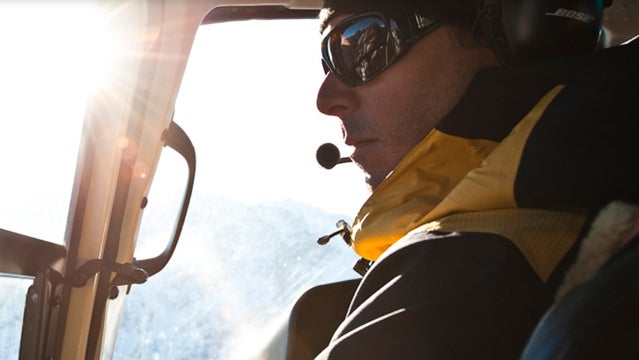
In the nineties, with the advent of twin tips, heli-skiing, and an explosion of new media, things changed a lot for skiing. In the next 25 years, I see a slowdown in the evolution.
Backcountry skiing will continue to be a big growth segment. Skiers will be doing more hut trips, touring, and heliskiing.
Technology will evolve from a safety perspective. Airbags will lift you off the slope so an avalanche can pass under you, and after a minute you’ll float gently back down to earth. Avy beacons and search technology will be integrated into your cell phone—in fact all your gadgetry will be incorporated into one device. In 25 years, you may be able to put 10 terabytes of information onto a chip implanted into your ear under your skin. Any information you want will download from your mind to a device in your hand that can tell you everything, totally changing the decision-making process.
Right now we have archaic “skins” on our skis to climb mountains. Why not have a ski with a flip switch that changes the polarity of a ski so that it grips?
It’s conceivable that in 25 years, we’ll have our own drone helicopters to transport us to the top of a mountain. Mini remote-controlled drones are used now to carry cameras on ski film shoots. In 25 years, there could be one that hooks to your pack so you can fly yourself to the top. Then you remote-control land it at the bottom of your run and ski down. It’ll be battery operated, zero emissions.��
In the future, there will be less focus on snowmaking. We’ll wait for mother nature to create snowfall and go play on what she gives us. It will be like surfing.
If you look back through the ski history publications at the experiences people were having, what we’re doing today in so many ways is much the same as 50 years ago. We’re skiing to get away from everyday life, the static of the world, enjoying being together with friends. Just because the technology changes doesn’t mean the sport will.
is one of the world’s top big mountain skiers.
The Future of Skiing: Glen Plake
Member of the U.S. Ski and Snowboard Hall of Fame
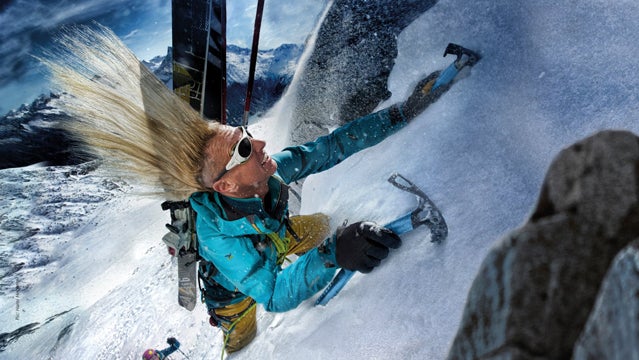
Skiers don’t need sushi and disco and all these ridiculous services. I hope the public steps up and says: “Too much money is being spent on parks and pipes—I want my ski area back.” Snowmaking and parks and pipes add a lot of cost to ski areas. We can reduce the price of tickets if we can reduce ski area costs. Maybe in the future the only thing a ski area will do is provide a lift and a lodge for people to get warm and get a sandwich. All this other manipulation of snow—the snowmaking, the grooming, the shaping into features—will stop.
In the 1970s, people said, If you don’t make snow said you won’t be a ski area open for business. Now resorts make tons of snow and the numbers are still dropping. I call bull on it. If we don’t get one natural snowstorm, nobody goes skiing. So why waste all this time and energy?
In 25 years, we need to realize that skiing isn’t a winter sport—it’s a snow sport. You ski when there is snow. People will ski in spring—March, April. There won’t be snow in “winter.”
It would be nice to get back to some basics. I think skiing has to remain a natural experience—I am not a fan of . I think that people in the cities are not going to start walking around the city in ski boots looking for rails. They want to get away from urban areas and go enjoy nature.
Glen Plake is a freestyle skier and member of the U.S. Ski and Snowboard Hall of Fame.
The Future of Skiing: Klaus Obermeyer
Founder of Sport Obermeyer
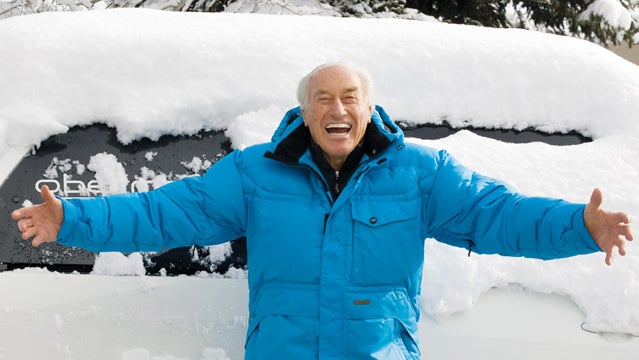
Let me tell you, we need more skiers and snowboarders on the mountain enjoying our sport—that is the most important piece. We need to band together as an industry—all brands, resorts, shops—to increase participation in winter sports. Then, in 25 years, we celebrate! Resorts will have dedicated more of their beginner-level terrain to be open free of charge, brands and shops will have partnered together on programs that encourage more people to get out and enjoy winter. People will be able to take their families skiing without spending their life savings.
My crystal ball tells me that skiing will expand, with many more participants then there are today. Skis will be even friendlier than they are now. Snowmaking ability will have improved to the point that, even if you live in Africa, someone will be making good snow.
Skiing will always depend on perceived snow conditions. If snow conditions are perceived as good, people will come out of the woodwork to ski. Snow is the most important thing. With no snow, trying to sell skiing is like trying to sell boats next to a lake with no water in it. I’ve tried that, and I know it doesn’t work. Now snowmaking is like life insurance. And it’s getting better and better.
Climate change is questionable. I would not worry too much about our snow sports in regard to the climate. There will be more skiing in Russia . And more skiing in northern China. There will be snow somewhere.
Klaus Obermeyer is the founder of .


